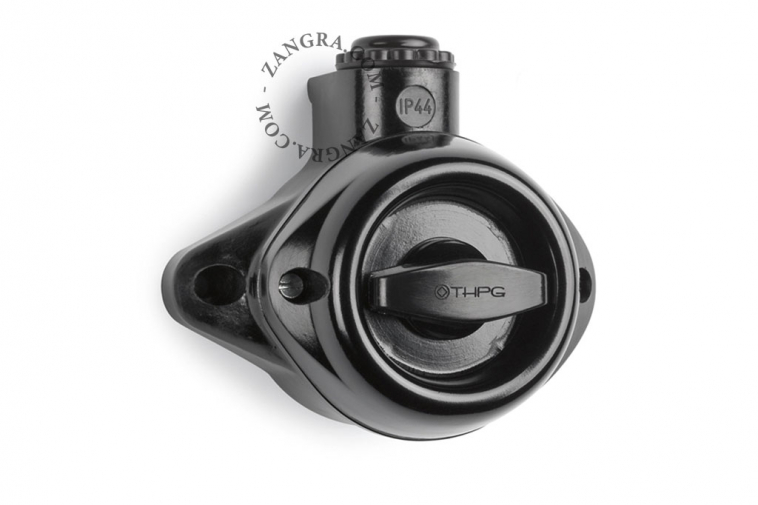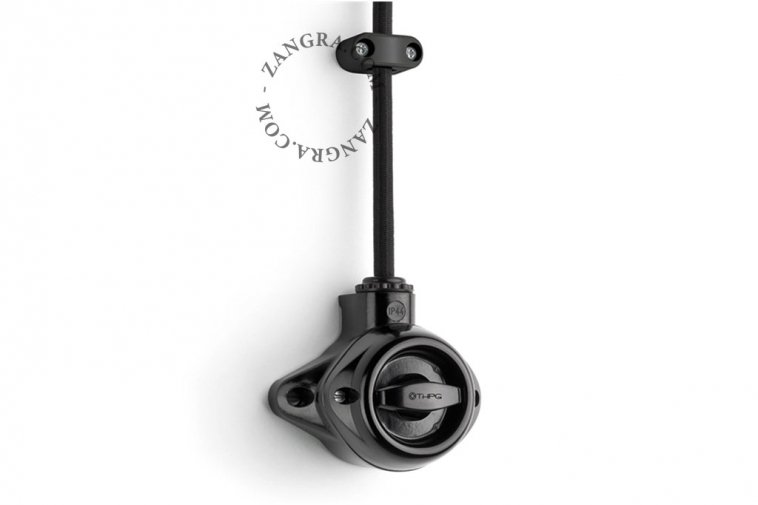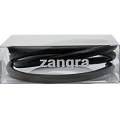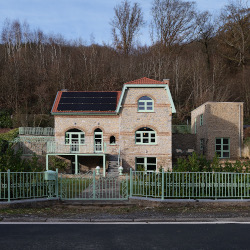surface mount black bakelite over-centre rotary intermediate switch IP44
switch.004.005
PLN 486.68
x
x
Collection of water-resistant bakelite switches and outlets
This collection of surface-mounted sockets and switches is a reproduction of historical models that have been brought up to current safety standards.The 2.5 mm thick bakelite monoblock case guarantees you a superior quality product. Indeed, bakelite is a solid, lightweight, highly heat-resistant and electrically non-conductive material.
This model has a side entry so that it can be connected to your electrical cable from the top of the box, rather than from the back. This means you no longer need to drill holes in your wall to connect your switch - you're free to place it wherever you like.
What's more, its moisture-proof casing protects it from humidity and means it can be placed in a high-humidity area such as a bathroom or laundry room.
What is an intermediate switch?
Intermediate switches are used when three or more switches are needed to control one single light. For example, if four switches control the same light, you would need 2 two-way switches and 2 intermediate switches. This situation could arise in a staircase with several landings: a switch at the bottom of the stairs, a switch at the top of the stairs and a switch for each landing space.Do not use an electrical screwdriver
Do not use electrical screwdrivers when installing bakelite items. We recommend to first drill a hole in the wall, fit the right plugs inside and use a manual screwdriver to fix the screws in place. Be especially careful during the final tightening of the screws.
What is bakelite?
Functional and aesthetic, bakelite is the ideal material for electrical engineering.Developed at the beginning of the 20th century by the Belgian chemist Leo Baekeland - from whom the term derives its name - bakelite is known for its heat-resistant properties, as well as its stability and high electrical insulation. Until the 1960s, bakelite participated in the elaboration and development of many technical innovations - such as the telephone and radio. For financial reasons, however, bakelite was gradually replaced by thermoplastic, which was less dense but also of a less comparable quality.
Today, in order to offer a quality alternative to thermoplastics, some factories located on the European continent are relaunching the production of bakelite, using traditional moulds and tools.
| SKU | switch.004.005 |
| EAN code | 4051094009598 |
| Material | Bakelite |
| Colour | Black |
| Height | 8,5 cm |
| Width | 9,7 cm |
| Depth | 6,5 cm |
| Origin | Europe |
| Marking | CE / VDE |
| Voltage | 10 AX - AC 250 V |
| Protection marking | IP44 |
| Amperage | 10 A |










